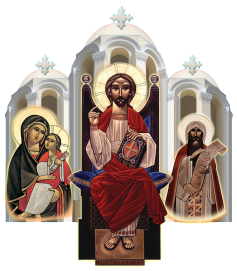Blessed Nativity Fast!
As we begin this sacred period of fasting, we would like to take a historical look at the Nativity Fast’s origin, its uniqueness, and what it represents.
The Nativity Fast that we currently practice is a 43-day fast, comprised of 6 weeks beginning from the 16th of Hathor (26th November) and concluding on the 28th of Kiahk (6th of January) followed by the Nativity Feast on Kiahk 29th (January 7th). It was only by the 11th century with Patriarch Christodoulous (A.D. 1077) that the 43 days were formally documented and instructed by the Church. Before this declaration, there was customarily a Kiahk fast (28 days) by Upper Egyptians.
But how did the odd number 43 come about?
Although there are no documented theological explanations as to why we fast 43 days, there are 2 widely used contemplations that explain the 40 days and the additional 3 days:
- The first contemplation traces its roots to the 15th-century Eastern Orthodox saint, Symeon of Thessaloniki (A.D.1429). He writes, “The Nativity Forty-day Fast represents the fast observed by Moses, who having fasted for forty days and forty nights received the Commandments of a God, written on stone tablets. And we, fasting for forty days, will reflect upon and receive from the Virgin the living Word—not written upon stone, but born, incarnate —and we will commune of His Divine Body.
- The second contemplation, unique to the Coptic tradition, involves a 3-day fast connected to the account of Patriarch Abraam Zaraa رزﻋﺔ ﺑأﺮآم (Ephraim Zurah) (A.D.978) and St. Simeon the Tanner in which with fasting, prayers, and vigil along with the people were instrumental in the miraculous movement of the Mountain of al-Muqattam during the 10th century Fatimid-era.
What is unique to the Nativity Fast is that throughout the fast we engage in numerous praises and vigils in the month of Kiahk, rejoicing in God’s incarnation as man and extolling St. Mary’s virginity, purity, and divine motherhood as the chosen vessel for the birth of Christ. These Kiahk vigils encompass additional hymns, melodies, interpretations, and readings. They are often referred to as “seven and four” (” ﻌﺔ
أورﻌﺑﺔ”), originally a tradition involving an all-night vigil held every Saturday in Kiahk. In this vigil, seven theotokias, one for each day of the week, are chanted between each of the 4 canticles (hoos). “Seven” denotes the seven theotokias, hymns to the God-bearer (St. Mary), and “four” signifies the 4 canticles.
While all seven theotokias can be chanted annually, due to practical reasons most churches (excluding monasteries and convents) focus on the Saturday and Sunday theotokias. Nevertheless, the theotokias contain profound theology and spiritual depth that must be studied, understood, and practiced.
Although the authorship of the theotokias remains unknown, they undoubtedly bear significant influence from our Church Fathers, particularly St Athanasius the Great and St Ephrem the Syrian. Most notably, the influence of St Cyril of Alexandria is the most pronounced in the theotokias. This is evident in phrases
like “one nature out of two” and the incorporation of Old Testament symbols associated with St Mary, such as the tabernacle and the golden censer. While the authorship is unknown, it is undoubtedly that the theotokias contain theological depth and richness embedded within our holy and righteous Fathers.
Within each theotokia, we see a common theme and a refrain. For instance, Monday’s focus includes Creation, the Fall, and God’s compassion toward us. Additionally, a refrain echoes through each of the nine parts of the theotokia: “He shone in the flesh, taken from the Virgin, without the seed of man, in order to save us.” Throughout this fast, we will explore and contemplate each refrain, delving into its spiritual significance.
Sources:
- A Brief History of the Advent Fast, St Athanasius College of Divinity
- The Coptic Theotokia. With Introduction by De Lacy O’Leary, Claremont School of Theology

